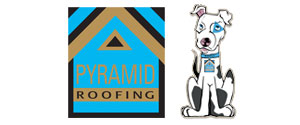- Do you subscribe to Dharma Dog Training’s Newsletter? You should.
- A Unique Campaign from The Humane Society of the United States
- Rabid bats in Omaha- Stay safe, prepared with these tips
- Springtime Activities in Omaha
- Mill Dog Monthly from Bailing Out Benji
- World Spay Day, Legislative Alert in Nebraska
- Attend the Nebraska Rescue Council’s monthly meeting this Saturday
- Five Hard-to-Ignore Reasons to Adopt!
- Paws in Pink to Benefit Breast Cancer Foundation
- VCA, Inc. Acquires MidWest Vet Specialists from Kansas State University
Don’t let the name fool you- Cuterebras aren’t cute

Recently, the Nebraska Humane Society (NHS) released a video that warned, the content “may be too graphic for some-discretion advised.” The video took viewers through the extraction of a Cuterebra from a stray kitten’s nose. See the video here.
Cuterebras are large, non-feeding flies that use small mammals as incubators for their offspring.
Despite the name, Cuterebras are not very cute. In fact, the one pulled out of the kitten’s nose resembled a large black slug, about the size of your pinky finger’s knuckle.
Luckily, the larva was successfully removed by Dr. Farrington, a veterinarian from the NHS.
The black slug was a Cuterebra larvae. Full grown Cuterebra resemble regular flies.
Although cats and dogs can contract cuterebras, they are not the original targets. The original targets are small rodents or rabbits.
Cuterebra’s lay their eggs near burrows, nests, and vegetation so that they can easily attach themselves onto small rodents or rabbits.
When they attach themselves to a warm body, the eggs will hatch. From there, they can invade through several different areas: the mouth, nasal cavity, or external wounds.
They create lesions below the tissue as well as a small breathing hole.
A lot of cats and dogs will ingest them during grooming, according to veternarypartner.com and an article the NHS references.
“What pet owners typically see is the swelling at the air hole and matted hair from the pets over-grooming,” Becky Lundgren, DVM, from veterinarypartner.com, said.
It may look similar to a large black pimple, or a cyst.
If you happen to find something that resembles this description, do not try to remove it yourself.
“Squeezing the lesion with your fingers can rupture the larva and cause an infection,” Lundgren said.
The best option is to take your animal to the vet where it can easily be removed.
“Your veterinarian will probe and enlarge the breathing hole, grasp the parasite with forceps, and pull the invader out,” Lundgren said.
Usually, that is all the treatment your animal will need. If the area has been infected your animal may need to have the wound flushed with saline, had the unhealthy tissue removed and covered with an ointment.
“Because of the ‘housing’ that was created around the subcutaneous parasite, it may take longer to heal than you might expect, but it will heal,” Lungden said.
The NHS is warning all pet owners to be on the lookout for these lesions, especially in warmer months throughout the year.
Related Posts
Latest News
-
3 Tips for Pet Owners on Training Rescue Dogs
Owning a rescue dog can take some work compared to...
- Posted 2 weeks ago
- 0
-
Choosing the Right Pet for Your Lifestyle
Are you thinking about getting a pet but unsure what...
- Posted 4 weeks ago
- 0
-
How to Make Your Rescue Pet as Comfortable as Possible
Did you bring home a new pet from a shelter...
- Posted 2 months ago
- 0
-
How Having A Pet Can Change Your Life
Having a pet can open your heart in ways that...
- Posted 7 months ago
- 0
-
How To Improve The Life Of Your Senior Pet
Do you have an elderly fur baby and want to...
- Posted 7 months ago
- 0
-
Springtime Activities To Enjoy With Your Furry Friends
Are you preparing for warmer weather and want some ideas...
- Posted 8 months ago
- 0
-
Pros And Cons Of Microchipping Your Pets
Have you considered whether your pets should be microchipped and...
- Posted 9 months ago
- 0






















You must be logged in to post a comment Login